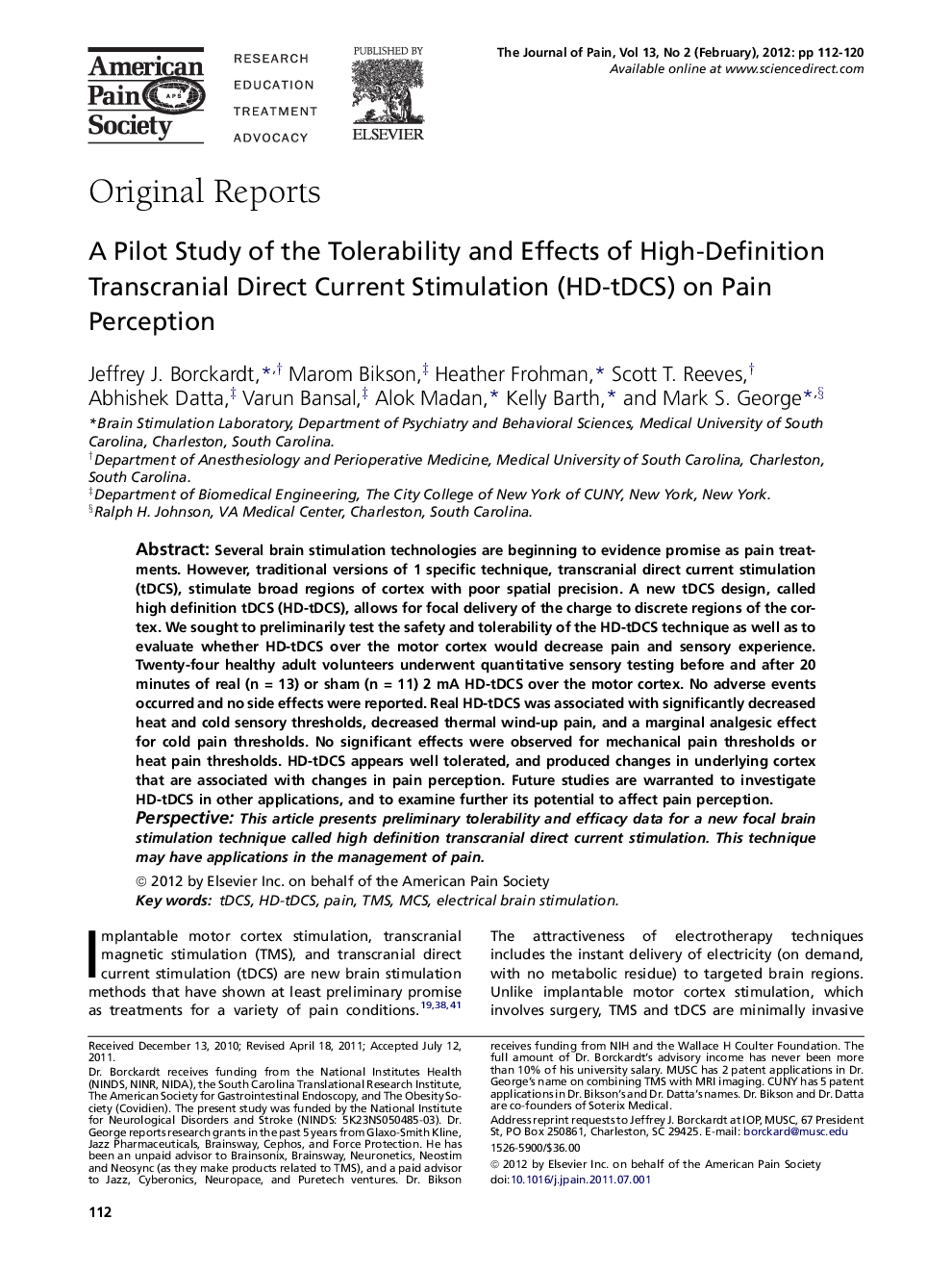| Article ID | Journal | Published Year | Pages | File Type |
|---|---|---|---|---|
| 2734166 | The Journal of Pain | 2012 | 9 Pages |
Several brain stimulation technologies are beginning to evidence promise as pain treatments. However, traditional versions of 1 specific technique, transcranial direct current stimulation (tDCS), stimulate broad regions of cortex with poor spatial precision. A new tDCS design, called high definition tDCS (HD-tDCS), allows for focal delivery of the charge to discrete regions of the cortex. We sought to preliminarily test the safety and tolerability of the HD-tDCS technique as well as to evaluate whether HD-tDCS over the motor cortex would decrease pain and sensory experience. Twenty-four healthy adult volunteers underwent quantitative sensory testing before and after 20 minutes of real (n = 13) or sham (n = 11) 2 mA HD-tDCS over the motor cortex. No adverse events occurred and no side effects were reported. Real HD-tDCS was associated with significantly decreased heat and cold sensory thresholds, decreased thermal wind-up pain, and a marginal analgesic effect for cold pain thresholds. No significant effects were observed for mechanical pain thresholds or heat pain thresholds. HD-tDCS appears well tolerated, and produced changes in underlying cortex that are associated with changes in pain perception. Future studies are warranted to investigate HD-tDCS in other applications, and to examine further its potential to affect pain perception.PerspectiveThis article presents preliminary tolerability and efficacy data for a new focal brain stimulation technique called high definition transcranial direct current stimulation. This technique may have applications in the management of pain.
